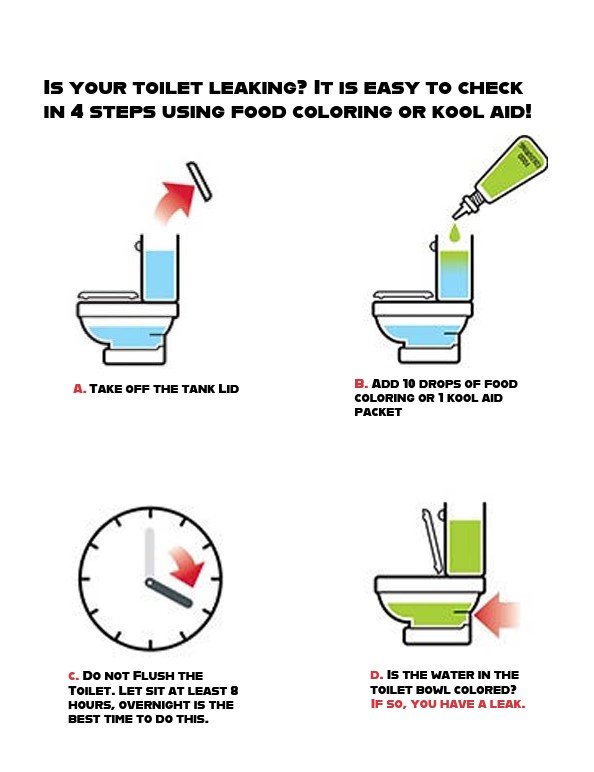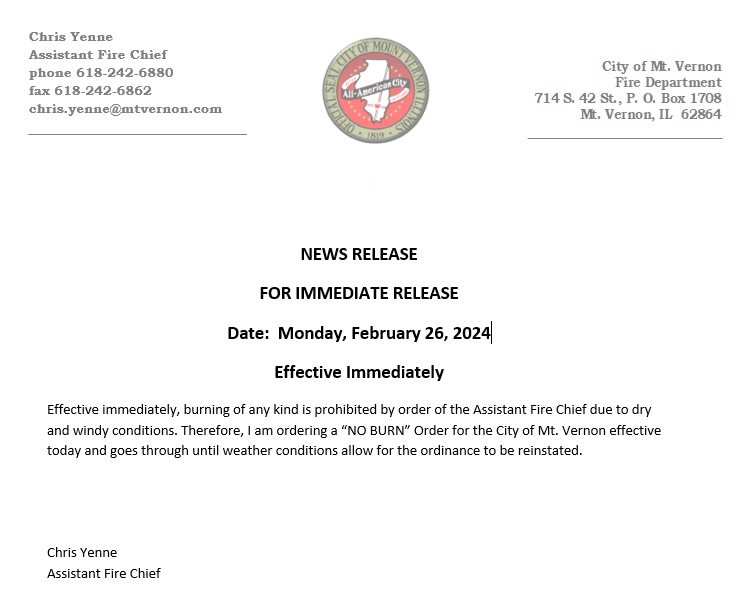Water Leaks
Occasionally customers may experience a leak in their plumbing systems. Here is some information on how to report a leak, the most common water leaks, and how to check for one.
Report a Leak
To report a water leak, call the Public Works office. If it is after hours, please call (618) 242-2131.
Checking for Leaks
The average household's leaks account for nearly 10,000 gallons of water wasted every year and ten percent of homes have leaks that waste 90 gallons or more per day. Common types of leaks found in the home are worn toilet flappers, dripping faucets, and other leaking valves. These types of leaks are often easy to fix, requiring only a few tools and hardware that can pay for themselves in water savings. Fixing easily corrected household water leaks can save homeowners about 10 percent on their water bills.
Toilet Leaks
The most common source of leaks is the toilet. If water is still running into the toilet bowl after the tank has stopped filling or if water can be heard running, your toilet is leaking.
Most toilet leaks occur at the overflow pipe or at the plunger ball inside the tank. To locate a toilet leak, take the tank lid off and flush it. The water level should come up to about a half inch or so below the overflow pipe. If necessary, adjust the float level control screw so the valve shuts off the water at that level.
Although water may not be seen or heard running, there may be a silent leak. To test for a silent leak, put a small amount of food coloring in the toilet tank after it has been filled. Do not flush the toilet for at least one hour or overnight if possible. If the food coloring shows up in the bowl without flushing, you have a silent leak.
The leak is probably located around the flapper valve at the bottom of the tank or the plunger ball. These leaks are easy and inexpensive to fix with local hardware or home store parts.

Faucet Leaks
The next place to check for leaks is your sink and bathtub faucets. Old and worn faucet washers and gaskets frequently cause leaks in faucets. A leaky faucet that drips at the rate of one drip per second can waste more than 3,000 gallons per year. Replacing the rubber O-ring or washer inside the valve can usually repair dripping faucets. Don’t forget to check for leaks on outside faucets and make sure the valve closes properly.
Showerhead Leaks
A showerhead leaking at 10 drips per minute wastes more than 500 gallons per year. Some leaky showerheads can be fixed by making sure there is a tight connection between the showerhead and the pipe stem and by using pipe tape to secure it. Pipe tape, also called Teflon tape, is available at most hardware stores, is easy to apply, and can help control leaks.
Still Have a Leak?
If you have checked your toilets, faucets, and showerheads and no leaks were found, a thorough inspection of your pipes, lines, connections, and valves under your home or in your basement would be the next step.
Contact Information
Public Works Office
1201 Casey Avenue
Mount Vernon IL 62864
Phone: (618) 242 - 6853
Fax: (618) 242 - 6861
Office Hours
Monday - Friday
7 a.m. - 3 p.m.
After Hours/Emergency
Call: (618) 242 - 2131
Matt Fauss
Public Works Director
Email: matt.fauss@mtvernon.com
Jonathan Younger
Assistant Public Works Director
Email: jonathan.younger@mtvernon.com

